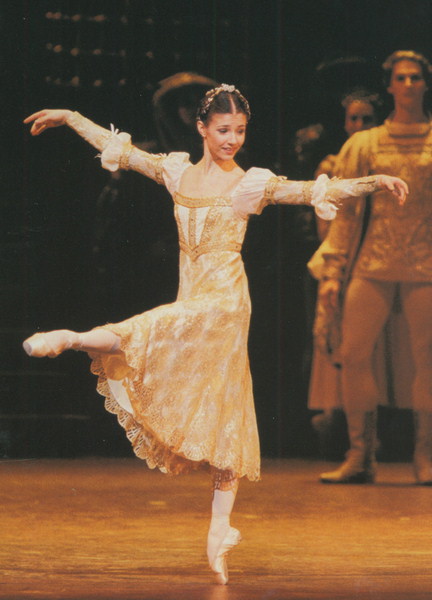 “Ballet Rehearsal” was easily one of Edgar Degas’ best compositions. It is a portrayal of a ballet rehearsal; however, things seem somewhat uneventful because a crowd of dancers is formed around the girls dancing. This gouache and pastel on canvas was created in 1875 is known as one of his more famous compositions of ballet. Ballet Rehearsal now resides in the George G. Frelinghuysen Collection in New York.
“Ballet Rehearsal” was easily one of Edgar Degas’ best compositions. It is a portrayal of a ballet rehearsal; however, things seem somewhat uneventful because a crowd of dancers is formed around the girls dancing. This gouache and pastel on canvas was created in 1875 is known as one of his more famous compositions of ballet. Ballet Rehearsal now resides in the George G. Frelinghuysen Collection in New York.Degas’ composition “Ballet Rehearsal” depicts a ballet rehearsal that seems to be rather dull. One may interpret this composition as a boring rehearsal because many people are crowded around the dancers who are rehearsing. The field of the composition is set in various values of green, and on the right, has a mixture of greens and yellows. As the field of the composition progresses to the left, the shade of green becomes darker. On the bottom left, there is a group of dancers with a man all gathered in juxtaposition. The dancers are emphasized by their tutu’s lighter color, which sets them apart from the field and the other characters. There is one dancer who is bending over, but her backside is facing the viewer. For some reason her tutu seems to attract the eye, possibly because it is highlighted with lighter shades. The crowd of dancers who are gathered seem like they are not paying attention to what is happening. There is a man standing off to the right side; however, only half of him is seen in the composition. Another man who is in the middle of the crowd of dancers is dressed in only values of brown with his shirt as a bright red color, which is different from the image’s color scheme. The focal point is the ballerina who is shown rehearsing. Most of the other characters are looking in her direction, which attracts the viewer’s eyes to her. The perspective of this composition is closer than a seat from the audience, so it seems to have been from the perspective of someone who was onstage. Degas’ use of different values of green and his contrast of the dancers and men are elements that make his composition effective. This composition shows a normal rehearsal that depicts other dancers as bored, so they would watch the rehearsal, or rude, in which they act as a distraction to those who are attempting to rehearse. Also, although this is a detailed composition, it leaves many questions that were not answered. For example, is it that the girls are bored, or could they be rude to those dancing? In addition, why is there half of a man seen on the right side of the composition? Is he of importance to the rehearsal, or is he just there as a bystander? Also, why is it that the dancers are not paying attention? Degas’ “Ballet Rehearsal” uses his talent in drawing ballerinas mixed with rebellious mannerisms of young dancers to create an attractive composition.



